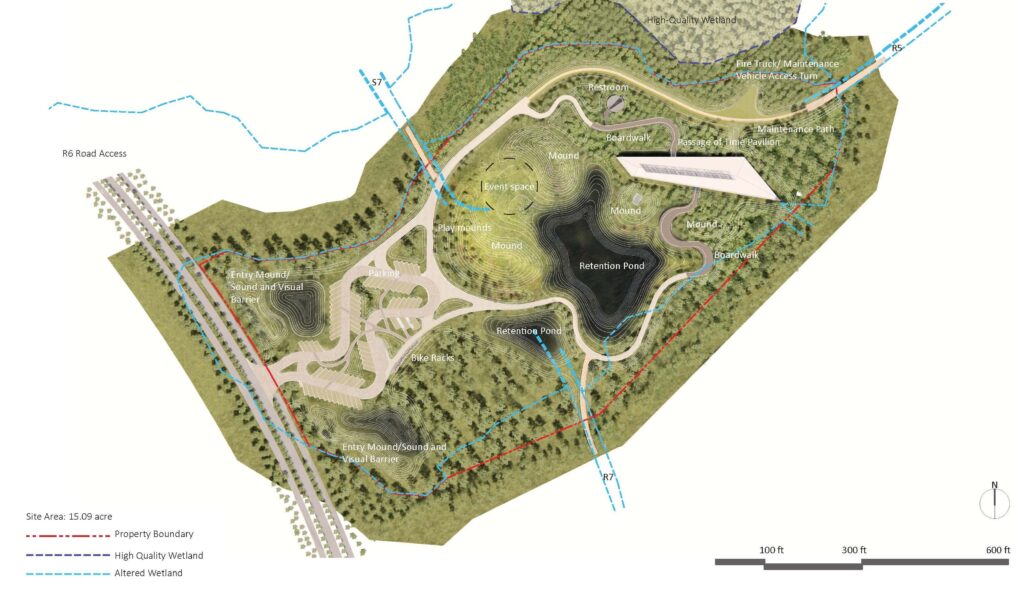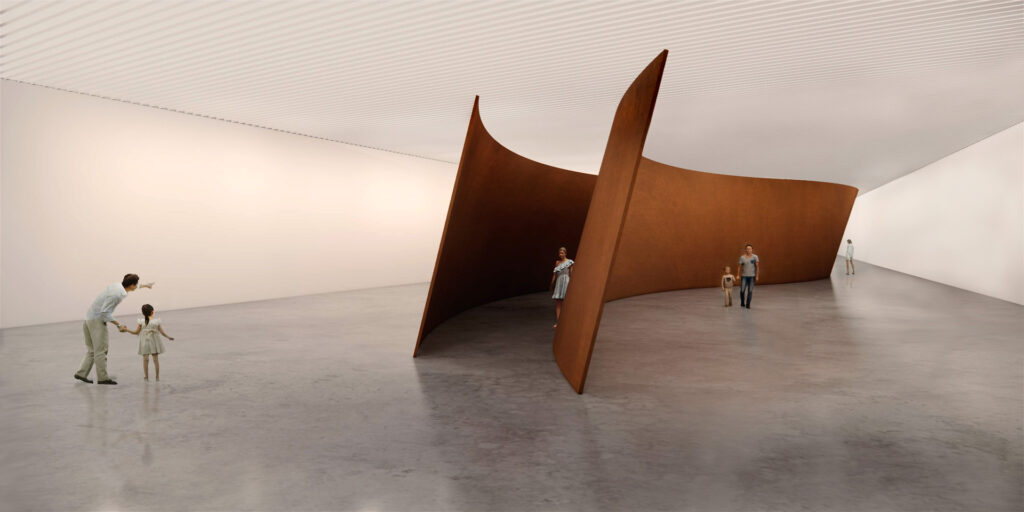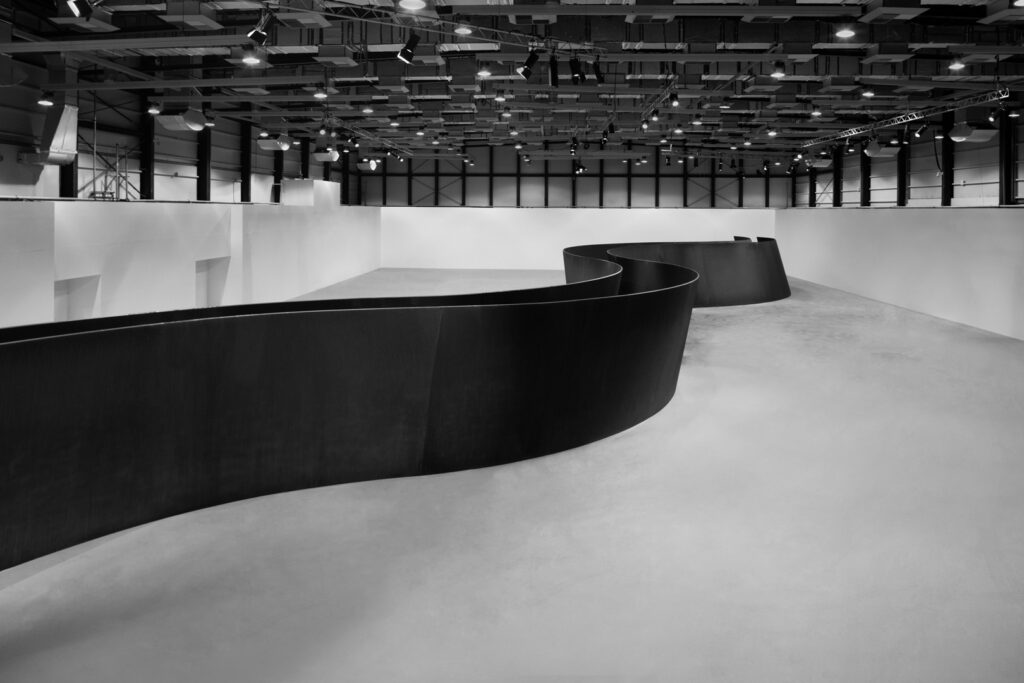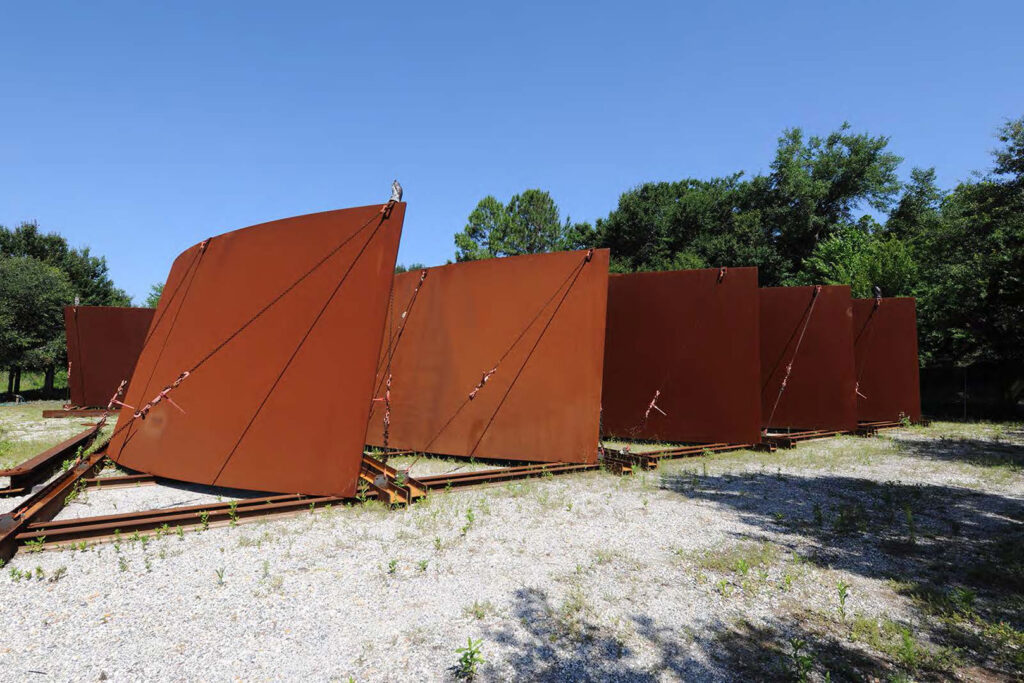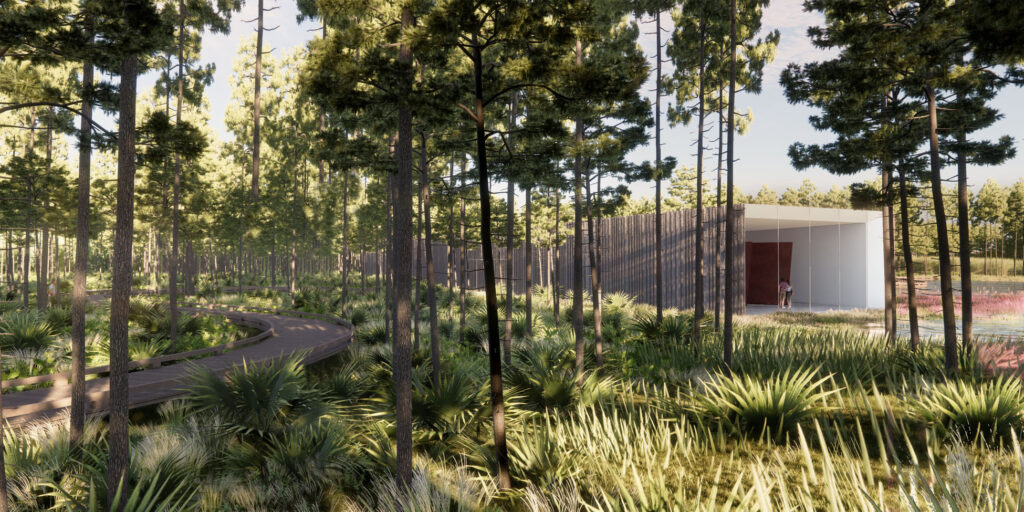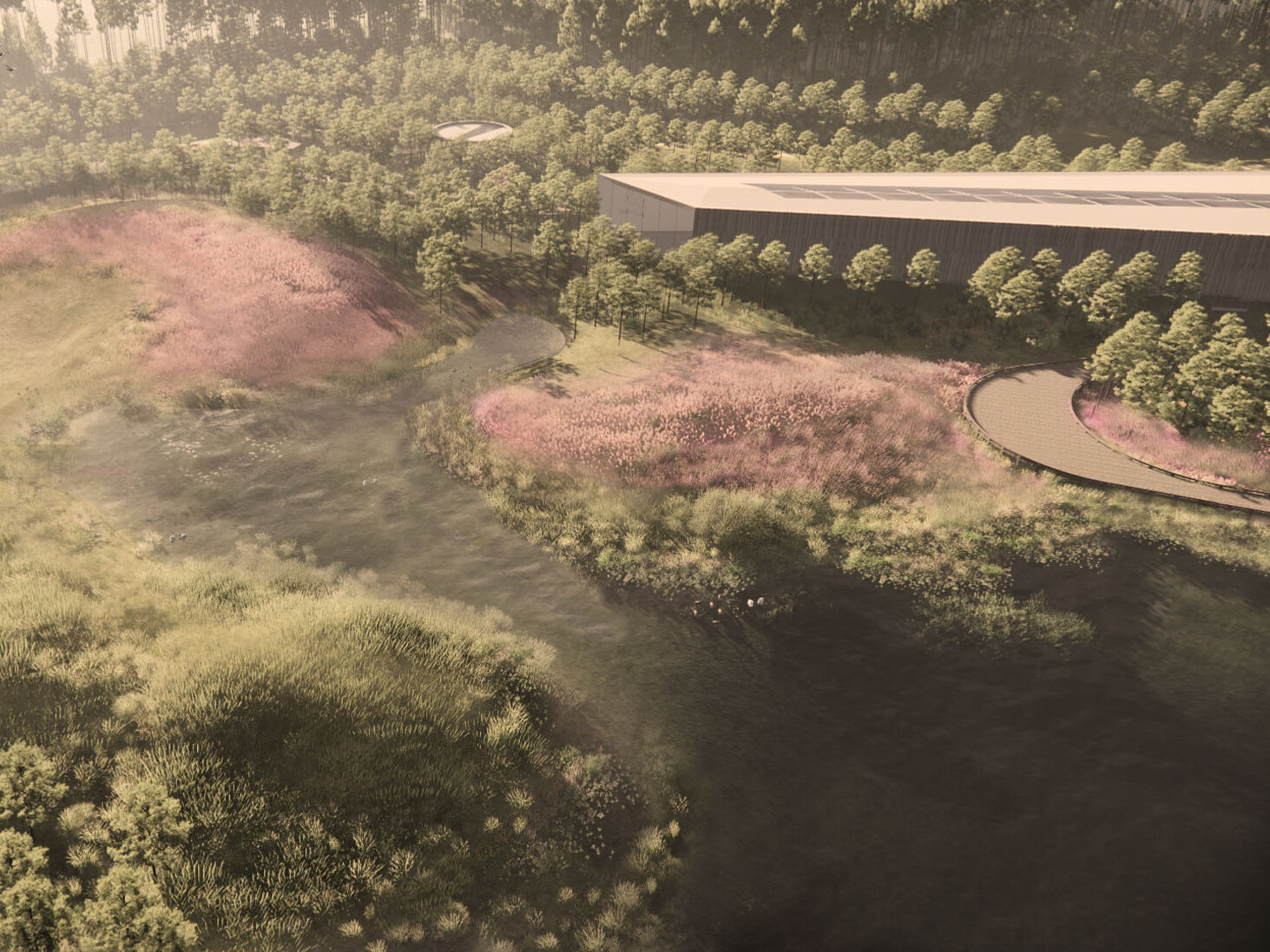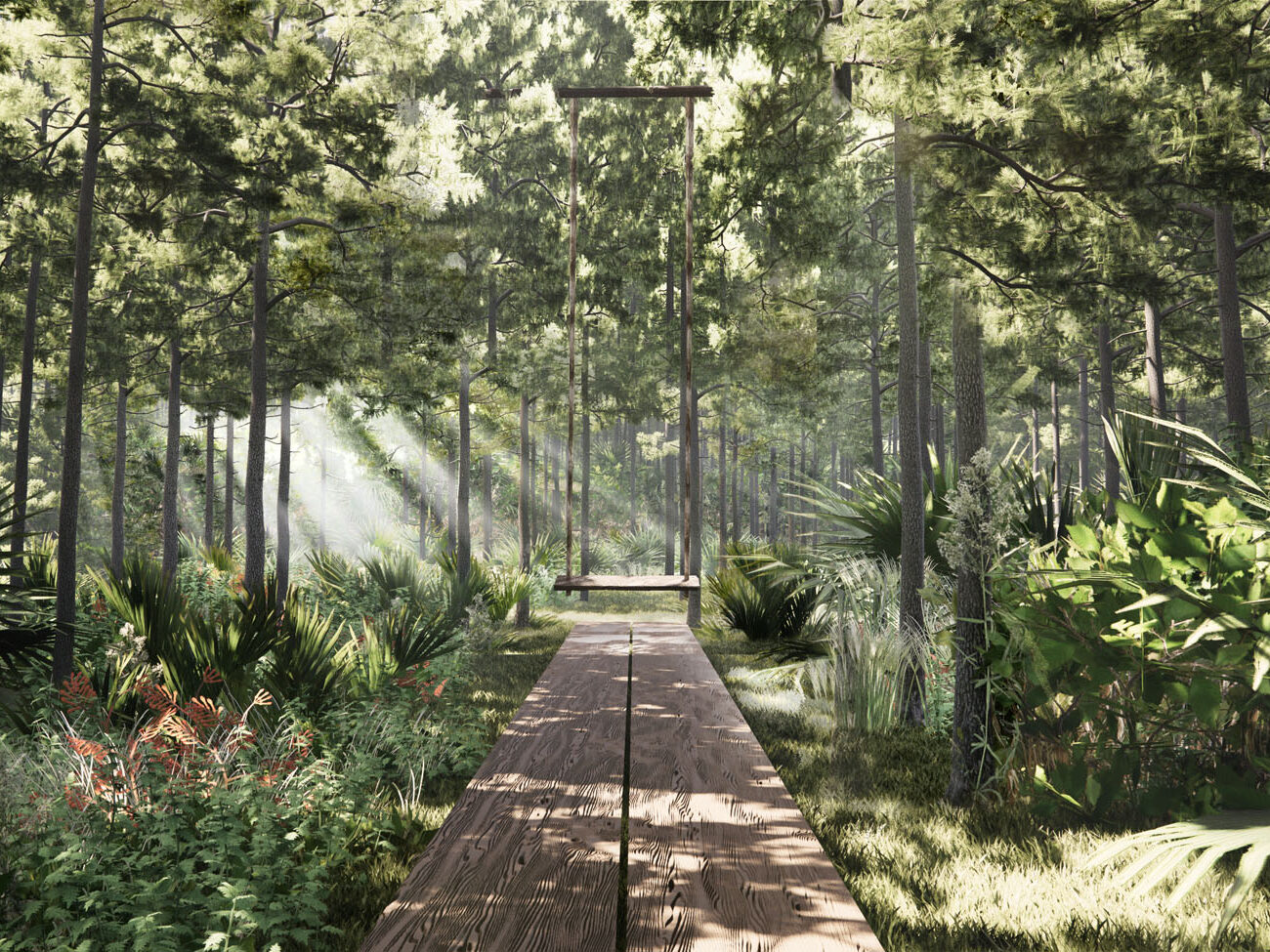Design: 2021/2024 Construction: 2024/ongoing
Situated in the Watersound Origins development, the 15.5-acre Longleaf Art Park will be a vibrant addition to Walton County, Florida, a new focal point of cultural, educational, and recreational experiences. Anchored by a purpose-built pavilion housing the 217’ long Passage of Time sculpture, a significant masterwork from world renowned artist Richard Serra, the park is designed to be a community hub offering diverse opportunities for enrichment and enjoyment.
Merging with the surrounding natural environment, the expansive art-themed park has a landscape of native flora and fauna, with winding recreational hiking trails offering picturesque views of the surrounding wetlands. A large retention pond forms an undulating littoral shelf lined with native aquatic vegetation. On the northern edge of the park, the 17,000 sf sculpture pavilion — OLI’s third collaboration with the artist, after the Museum of Islamic Art Park and sculpture pier for 7 in Doha, Qatar and the London Cross Gallery in Bedford NY — serves as a versatile gallery space, accommodating galas, lectures, and special events, contributing to a vibrant community atmosphere.
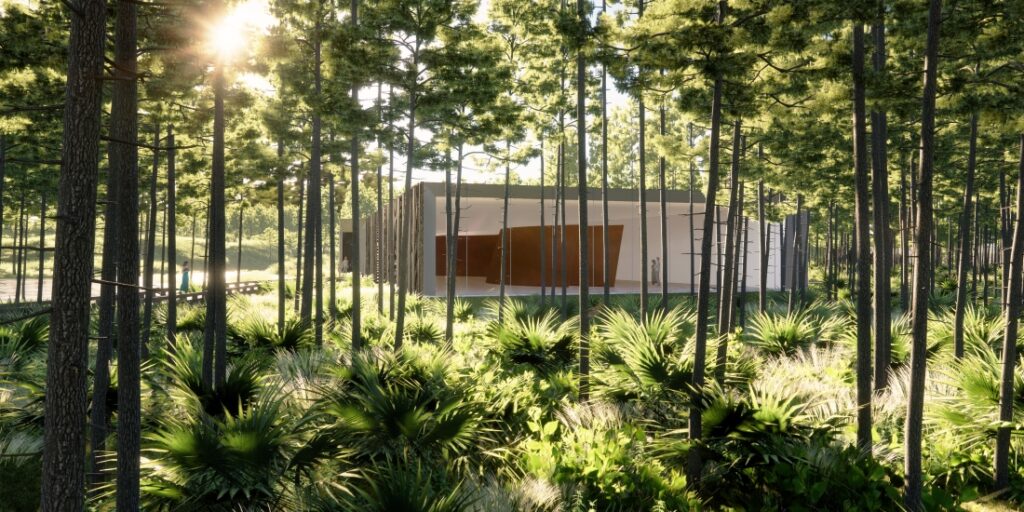
As the Passage of Time Pavilion serves as the anchor, the overall planning concept of the art park was to provide a heightened and pure experience of Serra’s sculpture, while keeping construction disturbances of the site to a minimum. The recreationally zoned site, which had been forested with slash pines for paper making, had the trees on the northeast half of the site harvested providing an open expanse. Besides the Passage of Time Pavilion, all amenities such as the reception, rest pavilion, visitor parking, and the large 20,000sf event space, which provide ample programming opportunities, were strategically placed on this cleared half of the site, away from the sculpture pavilion. Strategically contoured berms, whose fill will be taken from the retention pond protecting the surrounding wetlands, provide visual shielding of the pavilion forcing the visitor on a journey to discover Passage of Time.
To house Serra’s sculpture, OLI purposefully chose to visually expose the piece to be experienced with the existing tree canopy. Thus, unlike the typical pristine white box gallery container, which could be anywhere, or nowhere, the pavilion celebrates the history of the site, the native wetland, and the paper making tradition it cultivated, which serves as the sculpture’s new permanent home. This dialog with place, as in all of Richard Serra’s site-specific pieces, makes for the most powerful and impactful experience.
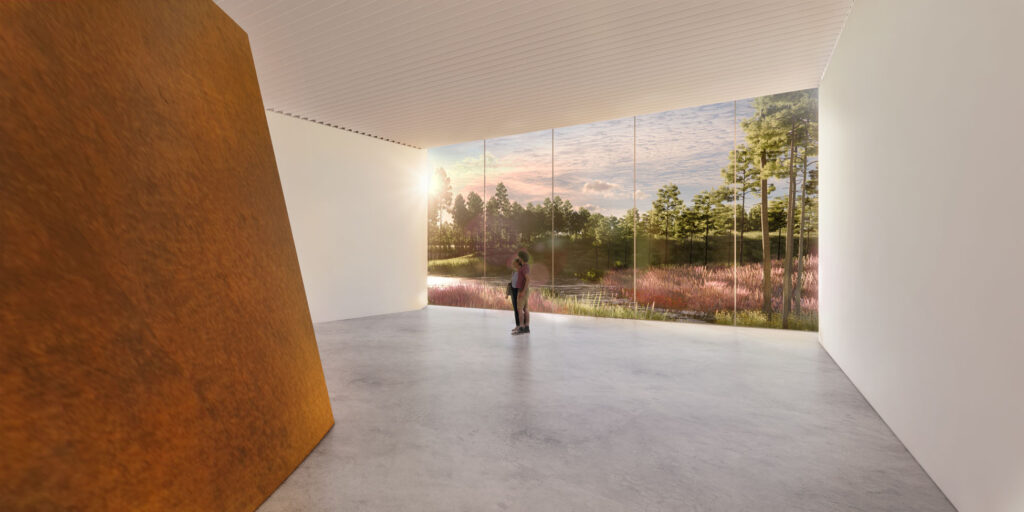
The design of the pavilion is deceptively simple yet highly engineered, carefully planned and detailed to heighten the art experience starting from the siting. Like the winding streams and decks that navigate the natural topography of the nearby wetlands, the pavilion is approached from a winding wooden deck, echoing the rhythmic form of the sculpture, that weaves between the tree columns. It hovers off the ground, true to the minimal impact ethos of the development. As one nears the pavilion, the turns become more frequent affording varying glimpses of the pavilion through the columns of the pine forest trunks and the pavilion façade.
The 300’ long x 110’ wide trapezoidal pavilion enclosure is entered from glass vestibules located at the concave pockets of the sculpture, one-third the length of the piece from opposing ends. The two entrances thus receive the visitors necessitating ambulation around and through, forcing an intimate experience with the sculpture.
Environmental considerations of the site were also a large factor in the design of the pavilion. From the East-West orientation of the building (the optimal orientation for the locale), to the large asymmetric pitched roof, providing vital shading while shedding the frequent rains, traditional passive strategies found in the vernacular architecture of Florida afforded large expanses of high-performance glazing. To create the desired “glass not there” effect of the envelope, the roof eaves prevent direct sunlight from falling on the 20’ tall low-e insulated glazing units which have three layers of non-reflective coating on low-iron clear glass. Meanwhile, the museum grade light diffusing insulated glass skylight, provides ample diffuse light onto the sculpture, animating the piece as if in a glade within the tree forest, making the Passage of Time a singular phenomenological experience that changes with the time of the day, the seasons, and each visit.
Due to the demands of the Florida Energy Conservation Code, strategic iterations of daylighting and energy simulation modeling were performed with key consultants to create optimal viewing conditions while ensuring code passing performance design. As we chose the energy model performance path permit submission, the existing tree canopy was modeled, aiding in the shading coefficient. For the structure, the large hovering 300’ long by 110’ wide trussed roof is supported by thick-walled pilasters of reinforced architectural concrete textured with the native pine of the surrounding forest. The pilaster placement has been engineered to allow for underground HVAC connections while allowing for a vertically textured façade of pine trunks to blend with the field of trees surrounding the pavilion while resisting the hurricane lateral wind loads.
As our research on the surrounding context and demographic trends show, it is increasingly evident that Longleaf Art Park strives to be a larger experience. Strategic programming of the site, with events and festivals and additional art amenities, will not only synergize with Serra’s sculpture, but also elevate the experience and value of the Art Park. With the addition of art amenities strategically planned nearby and throughout the “Emerald Coast,” an “art archipelago” will form, providing the critical mass to become a world class art destination.»

